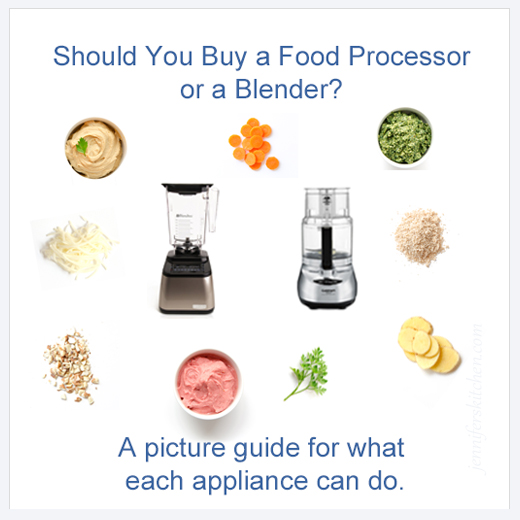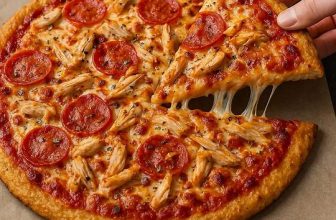Can You Use a Blender As a Food Processor?
Can You Use a Blender As a Food Processor? Yes, you can use a blender as a food processor for certain tasks, such as chopping or pureeing. However, blenders and food processors have different functions and may not be interchangeable for all tasks.
Blenders are great for making smoothies and soups, while food processors are better for slicing and shredding vegetables, making dough, or grinding nuts. It’s important to consider the specific needs of your recipes before deciding which appliance to use. Understanding the differences between blenders and food processors can help you make the most out of your kitchen tools and achieve the best results in your cooking and meal preparation.
Blending Vs. Processing: Key Differences
Blenders and food processors have different functions.
Blenders have lower motor power than food processors.
Blades in blenders are designed for liquids and smoothies.
Food processors have sharper blades for chopping and shredding.

The Role Of A Blender In The Kitchen
A blender is a versatile appliance that can be used for various tasks in the kitchen. One of the most common uses of a blender is for making smoothies and liquid recipes. The blender can easily break down fruits and vegetables, creating a smooth and consistent texture. Additionally, blenders can also be used for crushing ice and other hard ingredients. This is especially useful when making cocktails or frozen drinks. However, it is important to note that a blender may not be a suitable replacement for a food processor. While a blender can handle certain tasks, such as pureeing soups or making nut butter, it may struggle with more complex tasks that require precision cutting or slicing.
When To Use A Food Processor
Blenders are suitable for pureeing and blending, not for chopping and dicing. They can’t handle heavy-duty tasks like kneading dough. Food processors excel at chopping, dicing, and kneading. They are versatile for various food preparations.
:max_bytes(150000):strip_icc()/Cuisinart-Vs-Vitamix-7fe65962cd9e475f960402240a580a0a.png)
Adapting Blender Use For Food Processing Tasks
Discover the versatility of using a blender for food processing tasks. With the right techniques, you can effectively utilize a blender as a food processor for various culinary needs. Explore the potential of adapting your blender to streamline food prep in your kitchen.
| When using a blender for food processing tasks: | Consider the pulse technique for better control. |
| Adjust batch sizes to avoid overloading the blender. | Smaller batches ensure even processing. |
Limitations Of A Blender As A Food Processor Substitute
Blenders can’t fully replace food processors due to their limitations in handling heavy-duty tasks like kneading dough or slicing vegetables with precision. While blenders can chop and blend, food processors offer more versatility and control for various food preparation tasks.
| Blender as a Food Processor Substitute | Challenges |
| Texture and Consistency | Motor Burnout Risk |
| Blenders may not achieve the desired food texture. | Blender motors can overheat due to prolonged use. |
| Food may end up too smooth or uneven. | Using a blender for tough tasks can strain the motor. |
| Difficulties in achieving chunky or sliced results. | The blender’s power may not be suitable for processing. |
Quick Tips For Using Your Blender Wisely
Blenders can be a great alternative to food processors, but it’s important to use them wisely. One quick tip is to pre-cut your ingredients into smaller pieces before blending, especially if you’re making something like salsa or pesto. This will prevent overworking the blender’s motor and ensure a more even consistency. Another important factor is using the right speed for your ingredients. Low speeds are best for chopping and blending softer ingredients, while higher speeds are better for tougher ingredients like nuts and ice. By following these simple tips, you can use your blender as a food processor with great success.
Essential Accessories To Enhance Blender Functionality
Blenders can’t fully replace food processors, but they can handle some tasks.
A tamper tool helps to blend thick mixtures without stopping the machine.
Additional blades for your blender can expand its functionality for chopping and grinding.
When To Invest In A Separate Food Processor
Blenders can handle some food processing tasks, like blending smoothies and pureeing soups. However, for frequent use of specific functions or professional cooking needs, investing in a separate food processor may be necessary.
Cleaning And Maintenance Of Your Blender
Blenders are versatile kitchen appliances that can be used for various purposes, including food processing. However, it is important to note that blenders and food processors are not the same things. If you want to use your blender as a food processor, you need to be aware of how to clean and maintain it properly.
Routine cleaning of your blender is essential to ensure that it remains in good condition for longer. After each use, disassemble the blender and wash all the parts in warm soapy water. Rinse thoroughly and dry with a clean cloth before reassembling.
Long-term care of your blender involves deep cleaning to remove any buildup of food or debris that may have accumulated over time. To deep clean your blender, fill it halfway with warm water, add a few drops of dish soap, and blend on high for a minute or two. Rinse thoroughly and dry before storing.
Recipes To Try With Your Blender As A Processor
Blenders can be used as food processors to make a variety of delicious recipes. From hummus to pesto and even cookie dough, blenders can chop, blend, and puree ingredients to create a range of dishes. Give it a try and see what culinary creations you can come up with!
| For homemade salsa: | Blend tomatoes, onions, cilantro, and lime juice. |
| For almond butter: | Blend roasted almonds until smooth and creamy. |

Frequently Asked Questions
Can You Use A Blender Instead Of A Food Processor?
Yes, you can use a blender instead of a food processor for certain tasks like blending liquids or making smoothies.
Can I Turn My Blender Into A Food Processor?
No, you cannot turn your blender into a food processor. They are two different appliances with distinct functions. A blender is designed for liquid-based recipes, while a food processor is better suited for chopping, slicing, and shredding solid ingredients.
Can A Ninja Blender Be Used In Place Of A Food Processor?
Yes, a Ninja blender can be used as a substitute for a food processor. It can blend, chop, and puree ingredients effectively. However, it may not perform some specific tasks like grating or slicing as efficiently as a dedicated food processor.
Can I Use A Blender To Chop Vegetables?
Yes, you can use a blender to chop vegetables. It’s a quick and efficient way to prepare them for cooking.
Conclusion
To sum up, a blender can be used as a food processor to some extent. While they share similar functions, a blender’s main purpose is to blend and liquefy ingredients, whereas a food processor excels at chopping, slicing, and grating.
Depending on the specific task and the power of your blender, it may be able to handle certain food processing functions. However, for more precise and versatile food processing tasks, it is recommended to invest in a dedicated food processor.
Ultimately, it is essential to consider your specific needs and requirements before deciding which appliance to use in your kitchen.






